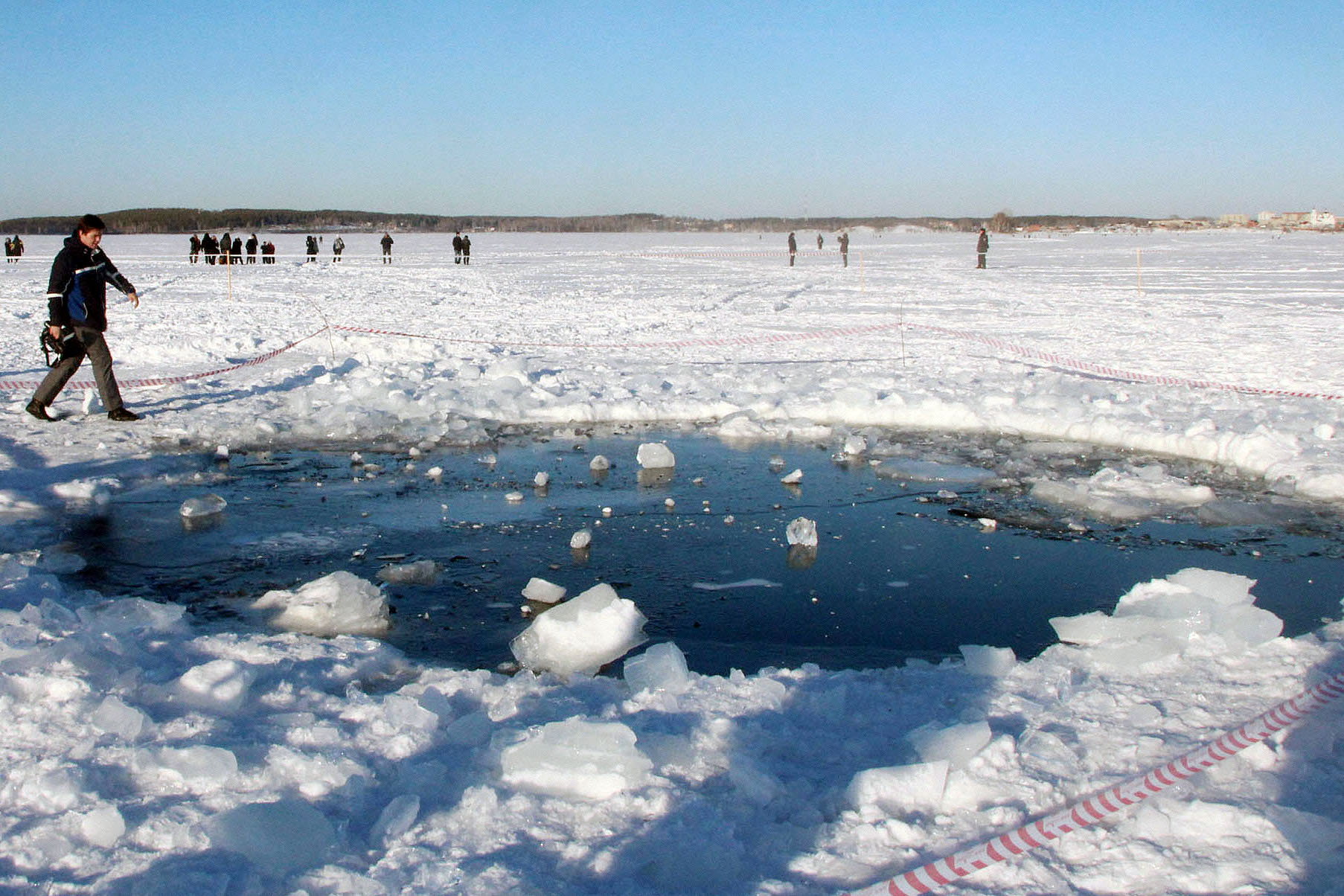
New Concord, Ohio was not the place to be standing outside on May 1, 1860—at least if you were a horse. It was in that town on that day that a meteorite fell out of the sky, killing the unsuspecting critter, who was decidedly in the wrong spot at the wrong time. Thirteen years earlier, on July 14, 1847, a 37 lb. (17 kg) iron meteorite smashed through the roof of a home in Hauptmannsdorf, Bohemia, showering three children with ceiling debris. Then there was the car that got clobbered in Benld, Illinois on Sept. 29, 1938, when a 4-lb. (1.8 kg) meteorite dropped out of the sky.
More than 200 years of such cosmic hijinks have been collected and catalogued on the website of Harvard University’s International Comet Quarterly (yes, that’s a thing), and now the rock counters have a new and more troubling entry to add to their list. According to multiple news accounts in India, a bus driver at the Bharathidasan Engineering College was killed by an explosion near an outdoor water tank that authorities are attributing to a meteorite strike. Initially, the police suspected a bomb, but an investigation at the site found no traces of explosives.

Most reports are characterizing the incident as the first confirmed death by meteorite, though numerous fatalities are included in the Comet Quarterly’s list, as well as one story of one woman who lost an arm to a meteorite. But the majority of those accounts are too old to be considered reliable, not least because the science of tracking incoming ordnance and analyzing the debris didn’t exist back then—at least not in a terribly sophisticated way.
So what are the odds that there will one day be a space rock out there that has your name on it? You can start your number-crunching with at least the possibility that the Indian victim really was the first, in which case the risk is exactly one in every single human being who has ever lived since the dawn of time—so you can probably feel safe taking out a 30-year mortgage. But a meteorite doesn’t have to score a direct hit to do real damage.
Every day, at least 100 tons debris, most of it dust, enter the Earth’s atmosphere. The overwhelming share of it burns up long before it could reach the ground. But an overwhelming share is not everything, and the debris that gets through can cause serious damage.
On Feb. 15, 2013, a 65-ft. (20 m) meteor exploded in the skies over Chelyabinsk, Russia releasing a 500-kiloton blast that shattered windows in 3,600 buildings and sent more than 1,200 people to the hospital. On June 30, 1908 a larger meteor devastated the forest near Russia’s Tunguska River, leveling 80 million trees over an area of 830 sq. mi. (2,150 sq. km) in a blast that has been estimated as the equivalent of 1,000 Hiroshima bombs.
It’s the energy in such a heavy, high-speed projectile that gives it its explosive power—a force far exceeding what the damage would be if the same mass were simply dropped from say, a 100 story building. The real if remote risk of meteor disasters led to the formation of NASA’s Near Earth Object Program Office, a research team that coordinates with both professional and amateur astronomers all over the world to keep track of potentially dangerous space junk and plot its trajectory.
The office estimates that it’s got a bead on about 95% of the 1 km (.62 mi.) rocks in the vicinity of Earth that could do the kind of global damage that led to the extinction of the dinosaurs 65 million years ago. That’s not remotely everything, and as Chelyabinsk and Tunguska showed, meteor damage can be catastrophic even if it’s not global.
Still, most people—like it or not—worry less about what might happen to someone else somewhere else, than they do about a meteorite arriving at the more intimate address we all call My House. And the odds of that are very, very slim. Space is a very big place. The Earth, in relative terms, is an exceedingly small thing. And your house—or your head—are much smaller still.
Put meteor strike on the list that includes lightning strike, tarantula bite, and sharknado storm. Could they happen? Maybe. Will they? No. Watch your cholesterol, cross with the light and don’t text while driving, and you’ll probably be fine.
More Must-Reads from TIME
- Donald Trump Is TIME's 2024 Person of the Year
- Why We Chose Trump as Person of the Year
- Is Intermittent Fasting Good or Bad for You?
- The 100 Must-Read Books of 2024
- The 20 Best Christmas TV Episodes
- Column: If Optimism Feels Ridiculous Now, Try Hope
- The Future of Climate Action Is Trade Policy
- Merle Bombardieri Is Helping People Make the Baby Decision
Write to Jeffrey Kluger at jeffrey.kluger@time.com